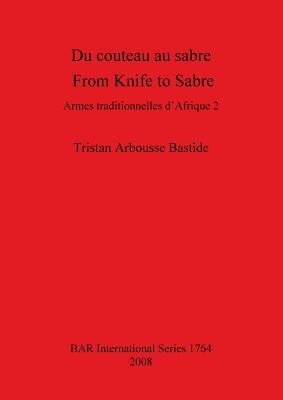
- We will send in 10–14 business days.
- Author: Tristan Arbousse Bastide
- Publisher: British Archaeological Reports Oxford Ltd
- ISBN-10: 1407302531
- ISBN-13: 9781407302539
- Format: 20.8 x 29.2 x 1.5 cm, softcover
- Language: English
- SAVE -10% with code: EXTRA
Du couteau au sabre / From Knife to Sabre (e-book) (used book) | bookbook.eu
Reviews
Description
In this second volume dedicated to the study of African edged weapons (see BAR 1098, 2003 for volume 1), the author focuses on short-knives, cutlasses, chopping-knives, machetes, and sabres. These weapons are characterized by a blade with a convex or eventually a straight single edge and sometimes a limited false edge. Also included in this study are weapons with a curved double cutting edge. The typology presents five main categories, the distinctions between them being established according to morphological and metrical evidence based on the observation of 275 weapons. These weapons, collected during the colonial era (mainly at the end of the 19th century and the early 20th century), are held by various European museums and private collections. Several areas in Africa are represented in this study: Northern Africa (from Morocco to Tunisia), Western Africa (countries from the Gulf of Guinea and Sahara), Central Africa (mainly the Democratic Republic of Congo and neighbouring countries), Eastern Africa (the Great Lakes area up to Djibouti, Sudan as a northern limit and Kenya as a southern limit). The categories studied are: short knives, cutlasses, chopping knives, 'machetes', and sabers. The work is illustrated with the author's own highly-detailed drawings.
EXTRA 10 % discount with code: EXTRA
The promotion ends in 17d.10:45:06
The discount code is valid when purchasing from 10 €. Discounts do not stack.
- Author: Tristan Arbousse Bastide
- Publisher: British Archaeological Reports Oxford Ltd
- ISBN-10: 1407302531
- ISBN-13: 9781407302539
- Format: 20.8 x 29.2 x 1.5 cm, softcover
- Language: English English
In this second volume dedicated to the study of African edged weapons (see BAR 1098, 2003 for volume 1), the author focuses on short-knives, cutlasses, chopping-knives, machetes, and sabres. These weapons are characterized by a blade with a convex or eventually a straight single edge and sometimes a limited false edge. Also included in this study are weapons with a curved double cutting edge. The typology presents five main categories, the distinctions between them being established according to morphological and metrical evidence based on the observation of 275 weapons. These weapons, collected during the colonial era (mainly at the end of the 19th century and the early 20th century), are held by various European museums and private collections. Several areas in Africa are represented in this study: Northern Africa (from Morocco to Tunisia), Western Africa (countries from the Gulf of Guinea and Sahara), Central Africa (mainly the Democratic Republic of Congo and neighbouring countries), Eastern Africa (the Great Lakes area up to Djibouti, Sudan as a northern limit and Kenya as a southern limit). The categories studied are: short knives, cutlasses, chopping knives, 'machetes', and sabers. The work is illustrated with the author's own highly-detailed drawings.


Reviews